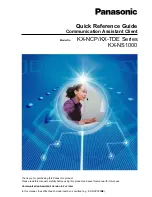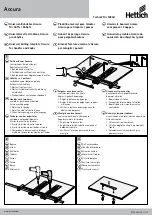
User's Guide HDSPe MADI
© RME
63
Unfortunately, very often it is not possible within the record software to assign a different input
channel to an existing track 'on the fly'. The loopback mode solves this problem elegantly. The
routing scheme stays the same, with the input channel 10 sent to any output via TotalMix, to the
Compressor, from the Compressor back to any input. Now this input signal is routed directly to
output 10, and output 10 is then switched into loopback mode via Ctrl-mouse.
As explained in chapter 26.5, the hardware input of channel 10 now no longer feeds the record
software, but is still connected to TotalMix (and thus to the Compressor). The record software
receives the signal of submix channel 10 instead – the Compressor's return path.
26.7 MS Processing
The mid/side principle is a special positioning technique for microphones, which results in a mid
signal on one channel and a side signal on the other channel. These information can be trans-
formed back into a stereo signal quite easily. The process sends the monaural mid channel to
left and right, the side channel too, but phase inverted (180°) to the right channel. For a better
understanding: the mid channel represents the function L+R, while the side channel represents
L-R.
During record the monitoring needs
to be done in 'conventional' stereo.
As TotalMix can invert the phase, it
also offers the functionality of a M/S-
decoder. The menu
Options
includes
a macro to simplify the setup. First
select the two input channels, in the
picture to the right
MADI In 3
and
4
,
having the current routing destination
MADI Out 1+2
. Now the string
MS
Processing In 3+4 to Out 1+2 On
is
shown in
Options
.
After a mouse click TotalMix sets gains and pans correctly. Of course
these settings can also be performed manually. Repeat the last step to
remove all routings (
menu Options ...Off
).
The M/S-Processing automatically operates as M/S encoder or decoder, depending on the
source signal format. When processing a usual stereo signal, all monaural information will be
shifted into the left channel, all stereo information into the right channel. Thus the stereo signal
is M/S encoded. This yields some interesting insights into the mono/stereo contents of modern
music productions. Additionally some very interesting methods of manipulating the stereo base
and generating stereo effects come up, as it is then very easy to process the side channel with
Low Cut, Expander, Compressor or Delay. The most basic application is already available di-
rectly in TotalMix: Changing the level of the side channel allows to manipulate the stereo width
from mono to stereo up to extended, stepless and in real-time.
Summary of Contents for HDSPe MAD
Page 5: ...User s Guide HDSPe MADI RME 5 User s Guide HDSPe MADI General ...
Page 28: ...28 User s Guide HDSPe MADI RME ...
Page 38: ...38 User s Guide HDSPe MADI RME ...
Page 39: ...User s Guide HDSPe MADI RME 39 User s Guide HDSPe MADI Connections and TotalMix ...
Page 46: ...46 User s Guide HDSPe MADI RME ...
Page 68: ...68 User s Guide HDSPe MADI RME ...
Page 69: ...User s Guide HDSPe MADI RME 69 User s Guide HDSPe MADI Technical Reference ...
















































